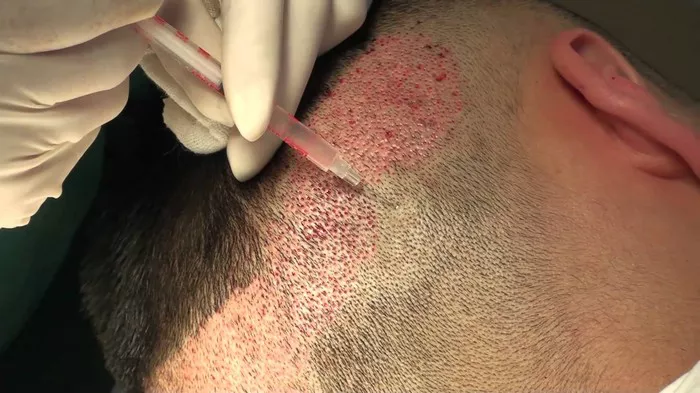Seborrheic dermatitis is a common skin condition characterized by redness, itching, and flaking of the skin. While it commonly affects areas rich in sebaceous glands such as the scalp, face, and chest, it can be particularly troublesome when it occurs on the scalp. Individuals with seborrheic dermatitis often find themselves grappling with the challenge of managing symptoms while maintaining healthy hair hygiene. Proper hair washing frequency plays a crucial role in managing seborrheic dermatitis effectively. In this comprehensive guide, we’ll delve into the nuances of how often you should wash your hair when dealing with seborrheic dermatitis in 2024.
Understanding Seborrheic Dermatitis and its Impact on the Scalp
Before delving into the specifics of hair washing frequency, it’s essential to grasp the nature of seborrheic dermatitis and its effects on the scalp. Seborrheic dermatitis is believed to result from a combination of factors, including the overgrowth of yeast called Malassezia, excessive oil production by the sebaceous glands, and individual susceptibility. These factors contribute to inflammation and irritation of the skin, leading to symptoms such as redness, itchiness, and flaking.
When seborrheic dermatitis affects the scalp, it can manifest as dandruff—a common condition characterized by the shedding of dead skin cells from the scalp. The presence of dandruff often leads to embarrassment and discomfort, prompting individuals to seek effective management strategies, including appropriate hair washing techniques.
Balancing Hygiene and Symptom Management
Maintaining proper scalp hygiene is crucial for managing seborrheic dermatitis effectively. However, excessive washing can strip the scalp of its natural oils, leading to dryness and exacerbation of symptoms. On the other hand, infrequent washing may allow oil and dead skin cells to accumulate, providing an ideal environment for Malassezia yeast to thrive.
Therefore, individuals with seborrheic dermatitis face the challenge of striking a balance between cleansing the scalp to remove excess oil and debris while avoiding overwashing that could exacerbate inflammation and dryness.
Determining the Ideal Hair Washing Frequency
The optimal frequency of hair washing for individuals with seborrheic dermatitis can vary based on several factors, including the severity of symptoms, individual scalp characteristics, and personal preferences. While there is no one-size-fits-all approach, the following guidelines can help individuals determine the ideal hair washing frequency:
1. Assess Your Scalp Condition: Pay close attention to your scalp’s condition and adjust your hair washing frequency accordingly. If you notice excessive oiliness, flaking, or itching, it may indicate the need for more frequent washing. Conversely, if your scalp feels dry and irritated after washing, you may be washing too often.
2. Consider Seborrheic Dermatitis Severity: Individuals with mild seborrheic dermatitis may find relief with less frequent washing, while those with more severe symptoms may benefit from more frequent cleansing to remove excess oil and dead skin cells. Consult with a dermatologist to determine the appropriate frequency based on the severity of your condition.
3. Experiment with Different Intervals: Don’t be afraid to experiment with different hair washing intervals to find what works best for your scalp. Start with a moderate frequency, such as washing every other day, and adjust as needed based on your scalp’s response.
4. Use Gentle Cleansing Products: Opt for gentle shampoos specifically formulated for sensitive or dandruff-prone scalps. Look for products containing ingredients such as salicylic acid, ketoconazole, or zinc pyrithione, which can help control flaking and reduce inflammation without causing excessive dryness.
5. Incorporate Scalp Treatments: In addition to regular washing, consider incorporating scalp treatments such as medicated shampoos or topical creams recommended by your dermatologist. These treatments can help manage symptoms and reduce the frequency of flare-ups.
6. Practice Proper Washing Techniques: When washing your hair, be gentle with your scalp to avoid further irritation. Use lukewarm water and massage the shampoo into your scalp using your fingertips, taking care not to scratch or scrub vigorously. Rinse thoroughly to remove all traces of shampoo and conditioner.
7. Monitor Your Scalp’s Response: Pay attention to how your scalp responds to changes in your hair washing routine. If you notice an increase in symptoms such as itching, redness, or flaking, it may indicate that you need to adjust your washing frequency or switch to a different cleansing product.
Conclusion
Managing seborrheic dermatitis can be challenging, especially when it comes to determining the optimal frequency of hair washing. By understanding the underlying factors contributing to scalp inflammation and employing appropriate hair washing techniques, individuals with seborrheic dermatitis can effectively manage their symptoms and maintain scalp health. Remember to consult with a dermatologist for personalized recommendations tailored to your specific condition and needs. With proper care and attention, you can achieve a healthy scalp and hair despite living with seborrheic dermatitis.


